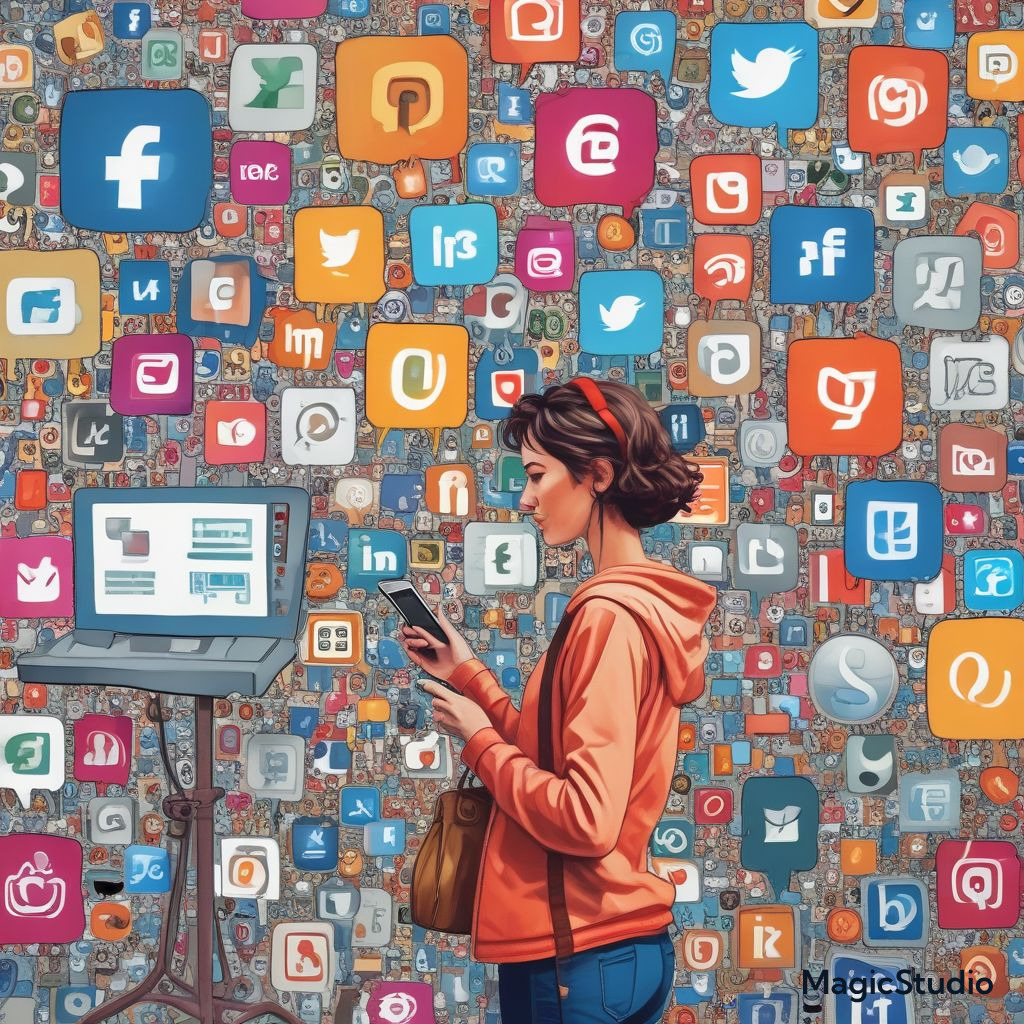How Social Media is Shaping E-Commerce: Trends to Watch in 2025

The intersection of social media and e-commerce is becoming increasingly influential in how businesses reach and engage with customers. Over the past few years, social platforms like Instagram, Facebook, TikTok, and Pinterest have evolved from entertainment spaces to powerful retail hubs, providing businesses with new ways to market products and connect with consumers.
In 2025, social media is expected to play an even bigger role in the e-commerce space. Let’s explore the key trends shaping the future of e-commerce through social media and how businesses can adapt to maximize their online presence and drive sales.
🛍️ The Rise of Social Commerce
Social commerce refers to the use of social media platforms to facilitate buying and selling. While platforms like Instagram and Facebook have been incorporating shopping features for years, 2025 will see a significant growth in social shopping, where users can discover, browse, and purchase products directly within the app.
- Instagram Shops and Facebook Marketplace have already integrated e-commerce tools that let users purchase without leaving the app. In 2025, expect more platforms to add enhanced shoppable content, giving consumers the ability to shop from influencers, brands, and advertisements without ever leaving their feeds.
- TikTok has also embraced the social commerce trend, allowing users to purchase items directly through its platform. In 2025, social commerce on TikTok will become a key part of the platform’s business strategy, with more creators and brands utilizing TikTok’s built-in shopping features to drive sales.
📱 Influencer Marketing Continues to Drive Sales
Influencer marketing has exploded in the last few years, and in 2025, it will remain one of the most effective ways to drive e-commerce sales. Consumers trust recommendations from influencers and content creators, making them valuable partners for brands looking to reach a broader audience.
- In 2025, brands will continue to invest in micro-influencers and nano-influencers, who have smaller but highly engaged audiences. Their followers tend to trust their recommendations more, making them a more effective choice for marketing products.
- Brands will also leverage live streaming to create more interactive shopping experiences. Live shopping events, where influencers or brand ambassadors showcase products in real time, are expected to become even more popular in 2025.
💬 Social Media as a Customer Service Tool
As more businesses move their sales to social media platforms, customer service is following suit. Social media is now a key channel for providing customer support, and in 2025, this will become even more integral to e-commerce strategies.
- Live chat features, direct messaging, and AI chatbots on platforms like Facebook Messenger and Instagram DMs will continue to help businesses provide real-time support to customers.
- Brands will also use social listening tools to monitor conversations about their products and services, ensuring they can quickly address complaints and concerns, improving customer satisfaction and loyalty.
🧑💻 User-Generated Content (UGC) Takes Center Stage
User-generated content (UGC) has become a major asset for brands looking to build trust and credibility with potential customers. In 2025, UGC will become an even more critical part of social commerce strategies.
- Customer reviews, testimonials, and unboxing videos shared by satisfied customers will drive purchasing decisions. Consumers trust content from other users more than branded advertisements, and UGC will continue to influence purchasing decisions.
- Platforms like Instagram, TikTok, and YouTube will be crucial for businesses to leverage UGC by encouraging customers to create content around their products. Brands will offer incentives like contests, giveaways, and discounts to motivate customers to create and share content.
💡 Augmented Reality (AR) Will Enhance the Shopping Experience
Augmented reality (AR) is already changing the way we interact with products online, and in 2025, it will be a must-have tool for e-commerce businesses.
- AR shopping features on platforms like Instagram and Snapchat allow users to virtually try on products before purchasing. Whether it’s clothing, makeup, or furniture, AR enables consumers to see how products will look in their space or on their body without physically interacting with them.
- Brands will continue to integrate AR into their social media campaigns, offering consumers immersive experiences that drive purchase decisions. In 2025, expect to see more businesses using AR to create highly engaging, interactive content that connects consumers with their products in unique ways.
🌐 The Role of Data and AI in Social Commerce
In 2025, businesses will increasingly rely on data and artificial intelligence (AI) to optimize their social commerce strategies.
- AI-powered recommendations will become even more personalized, ensuring that consumers are shown the products that best match their interests and preferences. Social media platforms will use data to deliver tailored shopping experiences, enhancing the likelihood of conversions.
- Predictive analytics will also help businesses forecast trends and consumer behavior, allowing them to stay ahead of the curve and adapt to shifting market dynamics.
- Data privacy will continue to be a concern, and platforms will need to balance personalized advertising with consumer trust. Regulations around data privacy will continue to evolve, and businesses will need to stay compliant with new rules in 2025.
🧑💼 Best Practices for Leveraging Social Media for E-Commerce Success in 2025
If you’re a business owner looking to take advantage of the growing trend of social commerce, here are some strategies to keep in mind:
- Integrate Shopping Features: Make sure your business has set up shop sections on platforms like Instagram, Facebook, and Pinterest. Allow users to buy directly from your social media profiles without leaving the platform.
- Partner with Influencers: Find influencers who align with your brand and have a strong connection with their audience. Consider using micro-influencers to tap into niche communities and build trust with your target market.
- Create Interactive Content: Embrace live shopping events, polls, quizzes, and other interactive formats to engage users. The more interaction your content receives, the more likely it is to be prioritized by social media algorithms.
- Utilize AR and VR: Incorporate augmented reality (AR) into your social media strategy to offer virtual product try-ons and immersive shopping experiences. The more interactive and engaging your content, the better.
- Leverage User-Generated Content: Encourage your customers to create content that features your products. Share their posts and offer rewards to incentivize more people to get involved.
🚀 Conclusion: The Future of E-Commerce is Social
As we move further into 2025, the integration of social media and e-commerce will continue to grow, offering businesses innovative ways to reach and engage with customers. Social commerce, influencer marketing, AR features, and AI-driven recommendations will play a central role in shaping the future of shopping.
By staying up to date with the latest trends and adopting strategies that resonate with your audience, you can successfully navigate the evolving landscape of social commerce and drive sales directly through social media platforms.



